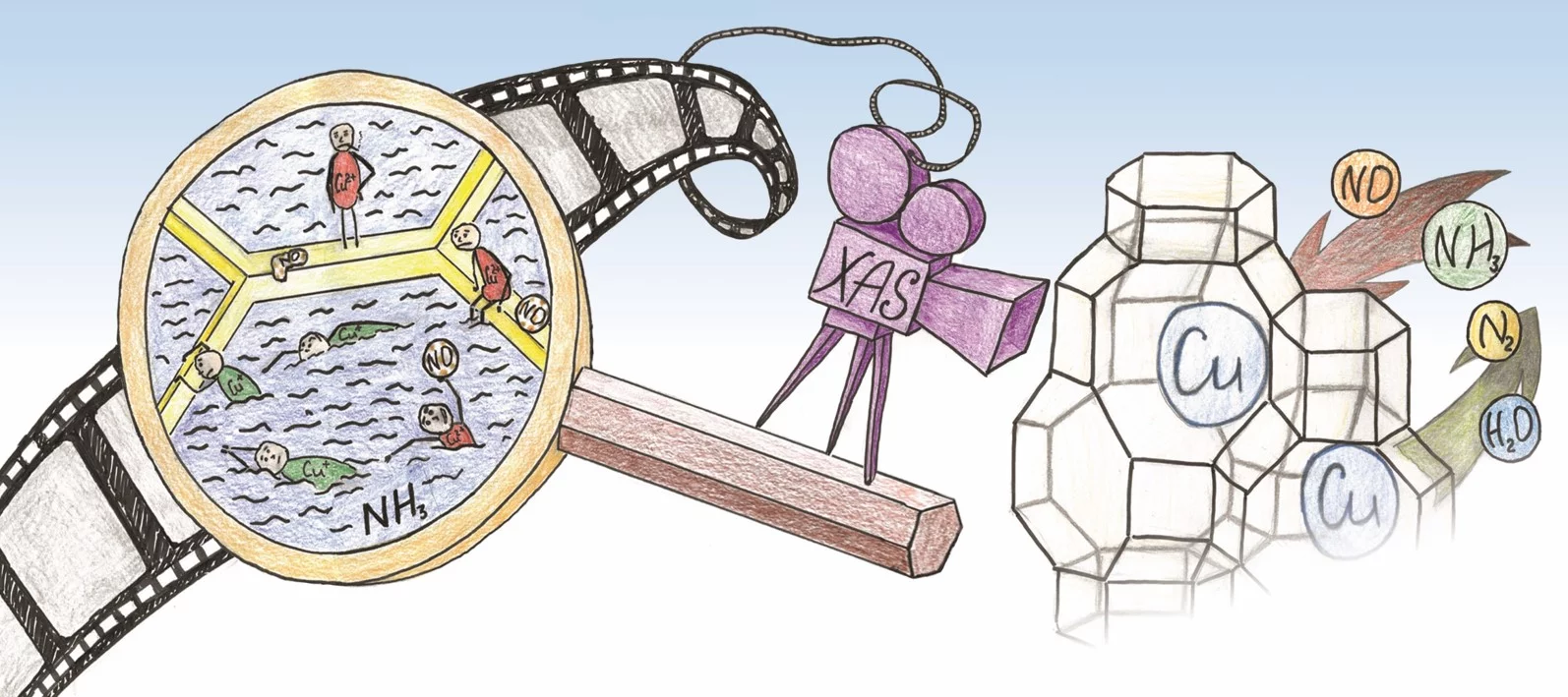The combination of time-resolved X-ray absorption spectroscopy and transient experimentation enables to capture an ammonia inhibition effect on the rate-limiting copper re-oxidation at low temperature. Practical catalysts often operate under dynamic conditions of temperature variations and sudden changes of feed composition that call for understanding of operation and catalyst structure under analogous experimental conditions. For instance, the copper-exchanged small-pore SSZ-13 catalyst used currently in the selective catalytic reduction of harmful nitrogen oxides from the exhaust gas of diesel-fuelled vehicles operates under recurrent ammonia dosage. Here, we report the design of unsteady state experiments that mimic such a dynamic environment to obtain key mechanistic information on this reaction. Through the combination of time-resolved X-ray absorption spectroscopy and transient experimentation, we were able to capture an ammonia inhibition effect on the rate-limiting copper re-oxidation at low temperature. The practical relevance of this observation was demonstrated by optimization of the ammonia dosage on a catalyst washcoat on cordierite honeycomb, resulting in lower ammonia consumption and an increase in nitrogen oxide conversion at low temperature.
Please refer to Nature Catalysis 2018, 1, 221–227 for further information.

